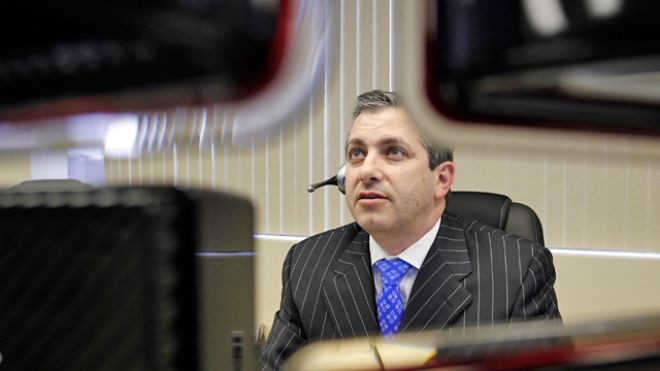Investing Mutual funds love those 12b1 fees
Post on: 29 Март, 2015 No Comment

By John Waggoner, USA TODAY
If you’ve ever woken up in the zoo surrounded by lemurs and who hasn’t? you know that some evenings just don’t work out the way you’d planned.
Sure, you might say, you didn’t understand what would happen if you lost the karaoke contest, and your judgment was impaired by numerous drinks with 37 types of top-shelf liquor. But there you are, covered in peanut butter and surrounded by cooing primates.
Rule 12b-1, the section of securities law that lets funds charge an additional fee for marketing and distribution, is an example of how relatively innocent and well-meaning legislation can wind up dreadfully awry. If you’re an investor, you should avoid funds larded with 12b-1 fees. You might even want to drop a note to the Securities and Exchange Commission, urging it to revise the rule.
Let’s take a look at how the rule came to be. Dolly back to 1980, when stock-fund assets stood at $44.4 billion, down from $55.9 billion in 1972. The industry, seemingly struggling to survive, argued that it needed the ability to levy an additional fee of up to 1% for marketing costs to help attract more assets. More money in the funds would mean lower overall fees for shareholders. After all, it doesn’t cost twice as much to manage a $2 billion fund as a $1 billion fund.
The SEC agreed, grudgingly. But it assumed that once funds had boosted their assets, 12b-1 fees would eventually go away. Instead, funds kept charging these fees.
The American Funds’ Growth Fund of America A, for example, which is the nation’s largest fund, weighing in at $85 billion in assets, doesn’t exactly need to jack up its marketing efforts to attract more assets. Yet that fund charges a 12b-1 fee of 0.25% nearly as much as its other fees combined. The American Funds says the fee goes to servicing accounts.
The 12b-1 fee is also at the heart of the bewildering multishare class system we have today. In many cases, 12b-1 fees have morphed into a way to indirectly pay a broker’s commission.
Funds discovered that people don’t like to pay commissions on mutual funds. So they used the 12b-1 fee to make the brokerage charges more palatable and less transparent.
A particular mutual fund might have three share classes. Each share class represents the same portfolio but has a different expense structure:
A shares charge an upfront sales charge, or load.
B shares have no upfront sales charge. But they add a 1% 12b-1 fee, as well as a redemption fee that gradually declines the longer you own the fund. Eventually, typically after six to 10 years, B shares become lower-cost A shares.
C shares have no front- or back-end load, but they charge higher fees for eternity.
Share-class mania has swelled the number of average share classes per fund. Today, there are 8,120 funds, with a total of 21,260 share classes.
Some funds still have just one share class. But funds that do have multiple share classes are likely to have five or more.
Putnam American Government Income, for example, has a share structure that sounds like something out of The Cat in the Hat. Not only do you have little share classes A, B and C, but M, R, Y and LW, too.
With such complexity comes the possibility of shenanigans.
For example, A shares traditionally have breakpoints, triggering commission reductions, for larger investors. You might pay a 4.75% commission if you invest $5,000, but only 4% if you invest $100,000. Most fund companies will reduce your upfront sales charges if you pledge to invest enough money to reach the breakpoint within 13 months.
Many B shares, though, don’t have breakpoints. The broker’s commission will stay at the same rate whether you invest $10,000 or $1 million. The NASD doles out punishments for those who sell B shares to investors who would be better off in A shares, but it still happens.
The main reason to be wary of funds with high 12b-1 fees is enlightened self-interest. The more money you give to your fund, the less you have left over to invest.
Consider the Swell Fund, an imaginary (yet swell) fund that earns 8% a year and charges 1% a year for its services. We’ll compare it with the Less Swell Fund, which also earns 8% and charges 1% a year for managing the fund but carries a 12b-1 fee of 0.5%.
Had you invested $10,000 in the Swell Fund 30 years ago, you’d have $87,550 now. The Less Swell Fund? $76,123.
If you’re buying funds through an adviser or a broker, you can compare the long-term effects of a fund’s 12b-1 and other fees on the NASD’s fund-cost calculator at its website: www.nasd.com. Long-term investors are nearly always better off with A shares.
The SEC is mulling changes to rule 12b-1, and you can monitor its website www.sec.gov for any proposals it makes. The agency likes to hear from investors.
And it might help get mutual funds back on the right path.
John Waggoner is a personal finance columnist for USA TODAY. His Investing column appears Fridays. Click here for an index of Investing columns. His e-mail is jwaggoner@usatoday.com














